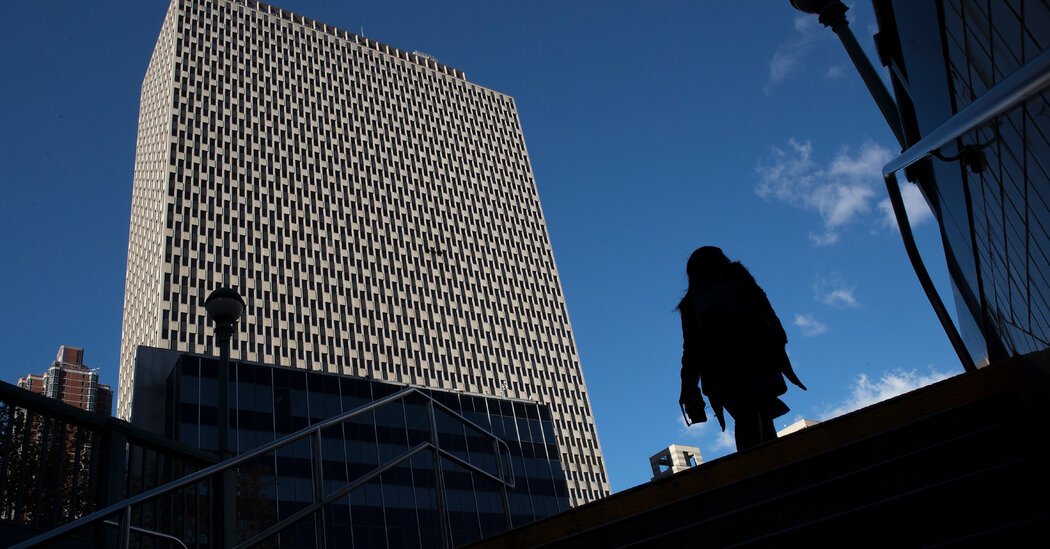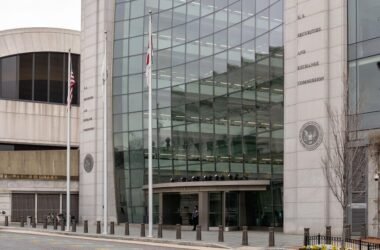For the previous twenty years, Liz Birenbaum’s 88-year-old mom, Marge, has obtained her Social Safety verify on the second Wednesday of every month. It’s her sole supply of revenue, which pays for her room at a long-term care middle, the place she landed final October after having a stroke.
When the deposit didn’t arrive in January, they logged into Marge’s Social Security account, the place they discovered some startling clues: the final 4 digits of a checking account quantity that didn’t match her personal, at a financial institution they didn’t acknowledge.
“Somebody had gotten in,” stated Ms. Birenbaum, of Chappaqua, N.Y. “Then I hit a panic button.”
It shortly grew to become evident {that a} fraudster had redirected the $2,452 profit to an unknown Citibank account. Marge, who lives in Minnesota, had by no means banked there. (Ms. Birenbaum requested to discuss with her mom by her first title solely to guard her from future fraud.)
Ms. Birenbaum instantly began making calls to set issues proper. When she lastly related with a Social Safety consultant from an area workplace in a Bloomington, Minn., the rep casually talked about that this occurs “on a regular basis.”
“I used to be shocked,” Ms. Birenbaum stated.
Social Security-related scams, total, are pervasive — fraudsters pose as workers to attempt to extract each cash and precious figuring out particulars from individuals in quite a lot of evolving schemes. However this specific fraud — the place criminals use stolen private data to interrupt into on-line Social Safety accounts or create new ones, and divert advantages elsewhere — has plagued individuals for a greater than a decade.
As soon as fraudsters achieve entry to a person’s on-line Social Safety account, they’ll change a beneficiary’s handle and direct deposit data, or request alternative playing cards.
Practically everyone seems to be a possible goal. The Social Safety Administration sends checks to greater than 70 million beneficiaries, together with retirees and disabled individuals, totaling almost $120 million each month. An estimated 2,000 beneficiaries had their direct deposits redirected final 12 months, in line with anti-fraud officers on the Social Safety Administration.
It may be a profitable fraud, and a devastating profit to lose. An estimated $33.5 million in advantages — meant for almost 21,000 beneficiaries — had been redirected in a five-year interval ending in Might 2018, in line with the latest audit from the Workplace of the Inspector Common, an impartial group liable for overseeing investigations and audits on the company. One other $23.9 million in fraudulent redirects had been prevented earlier than they occurred over the identical time interval.
“Fraudsters had been in a position to get hold of enough details about a real beneficiary to persuade the Social Safety Administration that they had been that beneficiary,” stated Jeffrey Brown, a deputy assistant inspector basic on the Workplace of the Inspector General, who analyzed the issue in 2019. “As soon as they had been within the entrance door, they had been in a position to change their direct deposits.”
Social Safety-related scams spiked in the course of the pandemic, according to O.I.G. officers, when Social Safety workplaces had been closed to the general public, forcing individuals to depend on the company’s on-line companies.
The Federal Commerce Fee, which collects self-reported complaints from shoppers, stated greater than 7,600 individuals reported that their advantages had been diverted from 2019 by way of the top of 2023, with an uptick in exercise final 12 months.
“A number of shoppers are letting us know they came upon that their direct deposit was redirected to a different account or a fraudulent account,” stated Maria Mayo, affiliate director of the F.T.C.’s division of shopper response and operations. “A number of instances they’re saying they acquired an impostor name they usually supplied their data, they usually consider that’s how that data was used to redirect the profit.”
In one other twist, there have been roughly 6,100 fraudulent claims final 12 months, or 0.3 p.c of all web-initiated retirement claims, that concerned criminals who filed for advantages on the earnings information of Individuals who had reached retirement age, however had not but claimed advantages, anti-fraud officers at Social Safety stated.
Criminals acquire the non-public figuring out data they want in any variety of methods, which they later use to interrupt into authorities accounts or create fraudulent ones. You want a Social Safety quantity to ascertain a web-based account with the company, however you don’t want your entire nine-digits to crack open an current one.
Amy Nofziger, director of fraud sufferer assist at AARP Fraud Watch Community, just lately scanned by way of her database of instances and got here throughout a handful of victims who had a third-party snag their Social Safety quantity throughout the previous six months. One unsuspecting particular person gave it to an impostor promising insurance coverage subsidies. One other felony posed as a consultant of the sufferer’s financial institution. In one more case, the fraudster pretended to be calling from a credit score bureau to confirm the sufferer’s Social Safety quantity.
Generally identification thieves declare they’re calling from a physician’s workplace, and in different cases they’re in a position to compromise an individual’s gadget and acquire precious data, equivalent to passwords or different private particulars saved.
When gathering numerous items of an individual’s identification, fraudsters may flip to marketplaces on the darkish net, the place a lot private figuring out data — usually stolen by way of safety breaches — is on the market.
Pam Dixon, govt director of the World Privateness Discussion board, a analysis group centered on information governance and safety, stated individuals dwelling in medical or assisted dwelling amenities had been additionally usually weak to those crimes. “It’s among the many ugliest types of identification theft,” she added.
Simply months earlier than Marge’s advantages had been redirected, the O.I.G. issued a report that stated the administration’s portal, referred to as my Social Safety, didn’t totally adjust to federal necessities for identification verification: It stated it didn’t go far sufficient to confirm and validate new registrants’ identities, in all instances. And as soon as an account is established by way of one in every of two identity verification portals, which is required to entry the my Social Safety account, the company doesn’t require customers to reverify their identities utilizing robust sufficient proof (equivalent to presenting a driver’s license together with, say, a selfie).
This wasn’t the primary time the impartial investigators discovered deficiencies, which date back to the introduction of the my Social Safety portal in 2012. The Workplace of the Inspector Common really helpful bolstering its digital identification verification course of in 2016, and whereas the company has made a number of enhancements, O.I.G. officers stated it nonetheless wasn’t totally compliant when it launched its newest audit in 2023.
The Social Safety Administration stated it had carried out a number of of the workplace’s suggestions because the portal was launched, together with the addition of a fraud evaluation staff for investigations. The company has additionally up to date its identification verification course of to reply to rising threats, it stated, and plans additional updates.
“Our workplace conducts ongoing analytics of on-line transactions and we search for anomalous conduct, and if we see new traits, we flag these and implement extra controls to cease any conduct that’s doubtlessly fraudulent,” stated Joe Lopez, assistant deputy commissioner for analytics, overview and oversight at Social Safety.
“The setting is at all times growing,” he added, “and we modify our fashions as wanted.”
The Social Safety Administration sends notices to beneficiaries by way of the mail asking them to contact the company in the event that they didn’t authorize a latest change to their direct deposit data, which has thwarted hundreds of thousands of {dollars} in advantages from being diverted and misplaced, O.I.G. officers stated. It is usually doable to dam modifications to the accounts.
The problem would have been unimaginable for somebody like Marge to rectify on her personal. It was difficult sufficient for Ms. Birenbaum, a advertising and marketing advisor, and her brother, primarily based close to their mom in a Minneapolis suburb, who labored collectively to get well the advantages and safe Marge’s account.
Ms. Birenbaum — who reported the crime to the O.I.G. and the F.B.I. and alerted her state and federal representatives — as soon as spent two and a half hours on maintain with the Social Safety Administration earlier than connecting with a regional case employee. The rep was in a position to see that her mom’s direct deposit data had been altered in early December, the month earlier than the advantages vanished.
Ms. Birenbaum’s brother visited their mom’s native Social Safety workplace and have become Marge’s “representative payee,” which permits him to deal with her affairs (Social Safety doesn’t settle for powers of lawyer). They needed to discover methods to make the correction with out bringing Marge to the workplace, which Ms. Birenbaum stated would have been a “herculean activity.”
Marge obtained the lacking cash on March 1, a few month and a half after they found the issue.
“For her, it ended on a contented notice,” Ms. Birenbaum stated, “however for a lot of, who don’t have advocates pushing daily, cybercriminals win.”
Take into account locking down your accounts. Create a my Social Security account, however then add an e-services block, a characteristic that forestalls anybody, together with you, from seeing or altering your private data on-line. You will have to contact your native workplace to take away it.
One other characteristic, a direct deposit fraud prevention block, stops anybody from enrolling in direct deposit, or altering your handle or direct deposit data by way of your on-line account or a monetary establishment. You need to contact an area workplace to make any modifications or to take away the block.
Don’t belief, additionally confirm. In case your telephone’s caller identification says “Social Safety Administration,” don’t belief it — the quantity could also be spoofed and the company solely calls beneficiaries in restricted conditions. Name again the company by way of its mainline 1-800-772-1213 or name an area website utilizing its office locator.
Report suspected scams and fraud to the Office of Inspector General’s website or name 1-800-269-0271.
Contact the Federal Commerce Fee in the event you suspect somebody has used your private data, both through its website or calling 1-877-IDTHEFT (1-877-438-4338).
Review the Social Safety Administration’s resource page on how you can spot scams.




